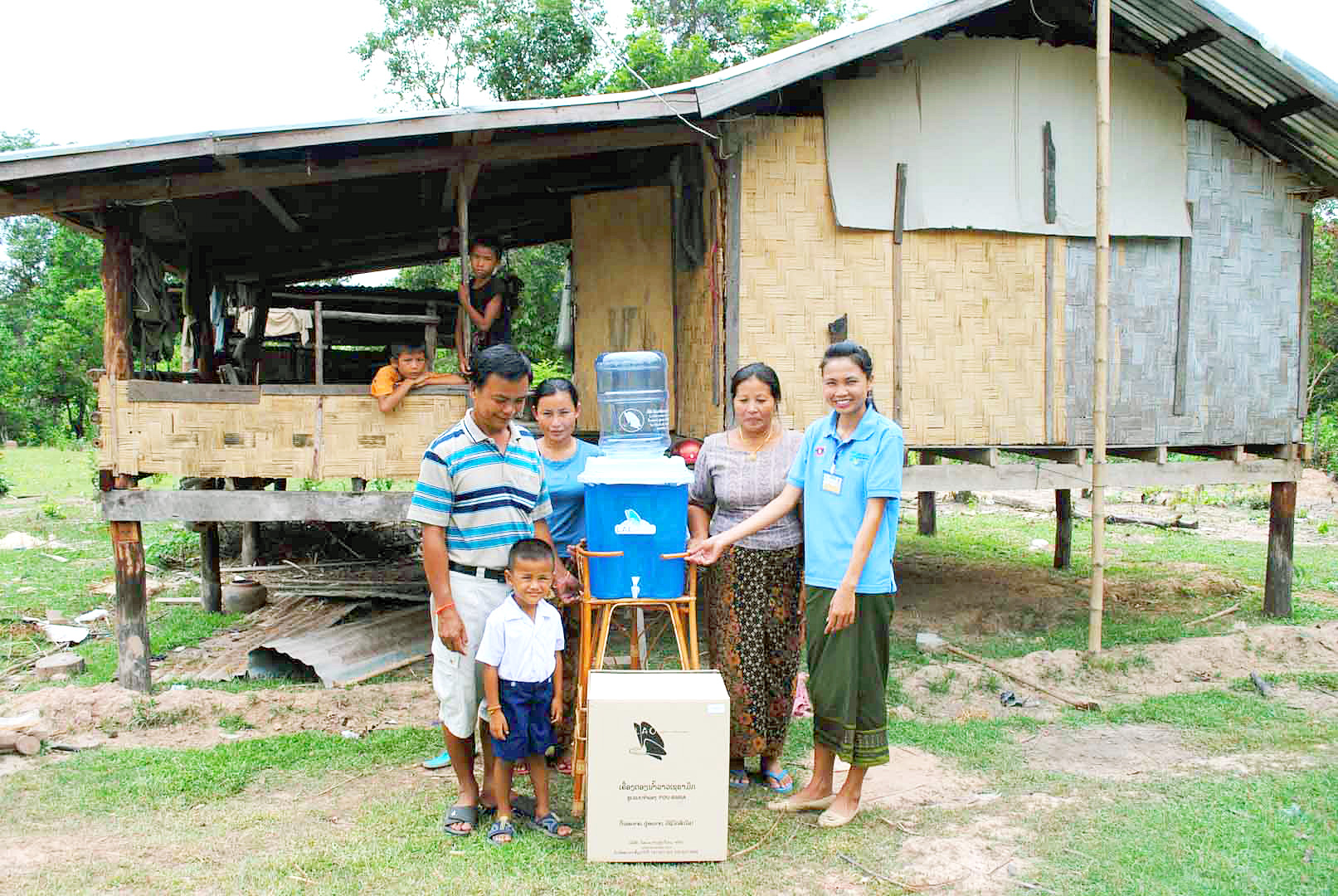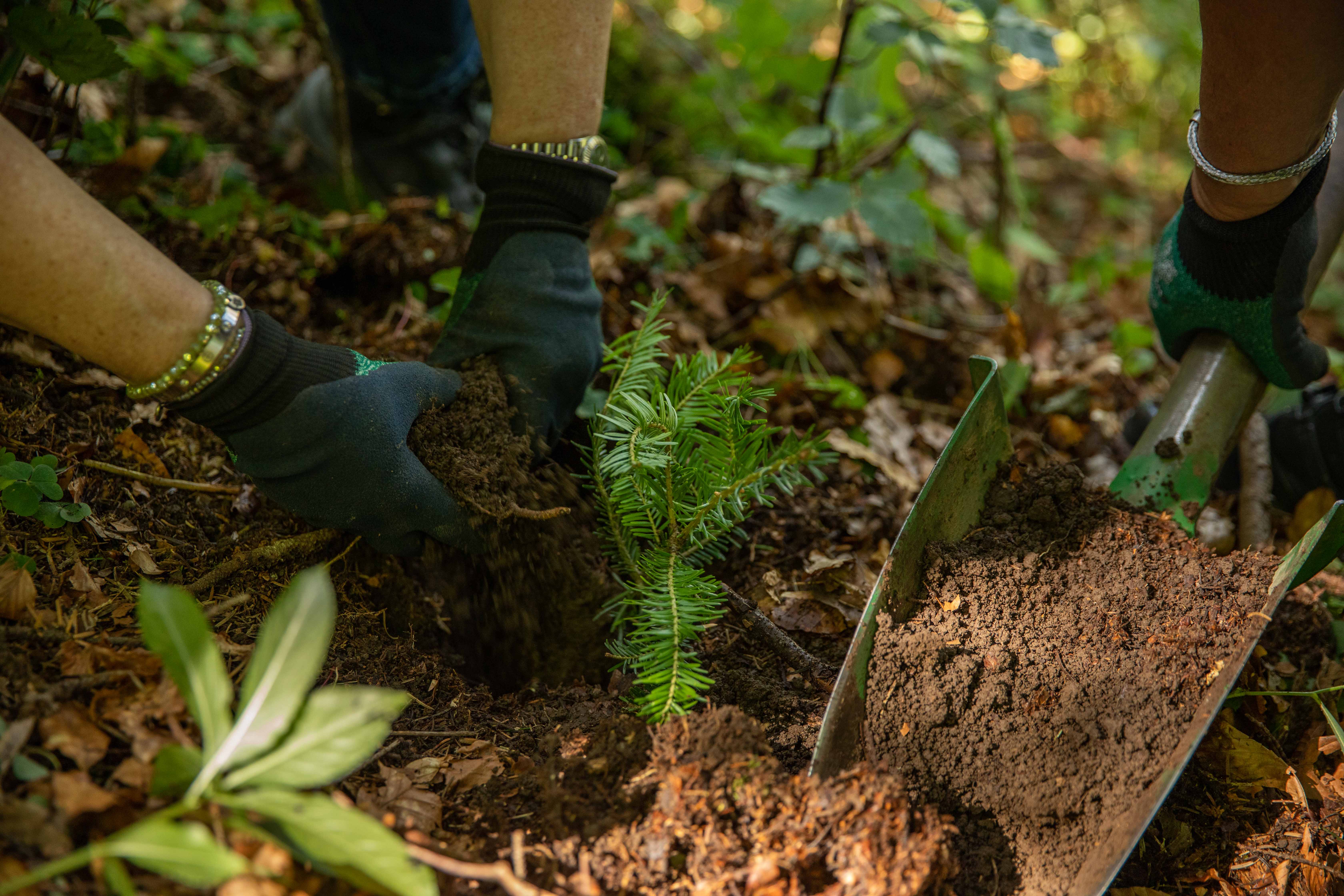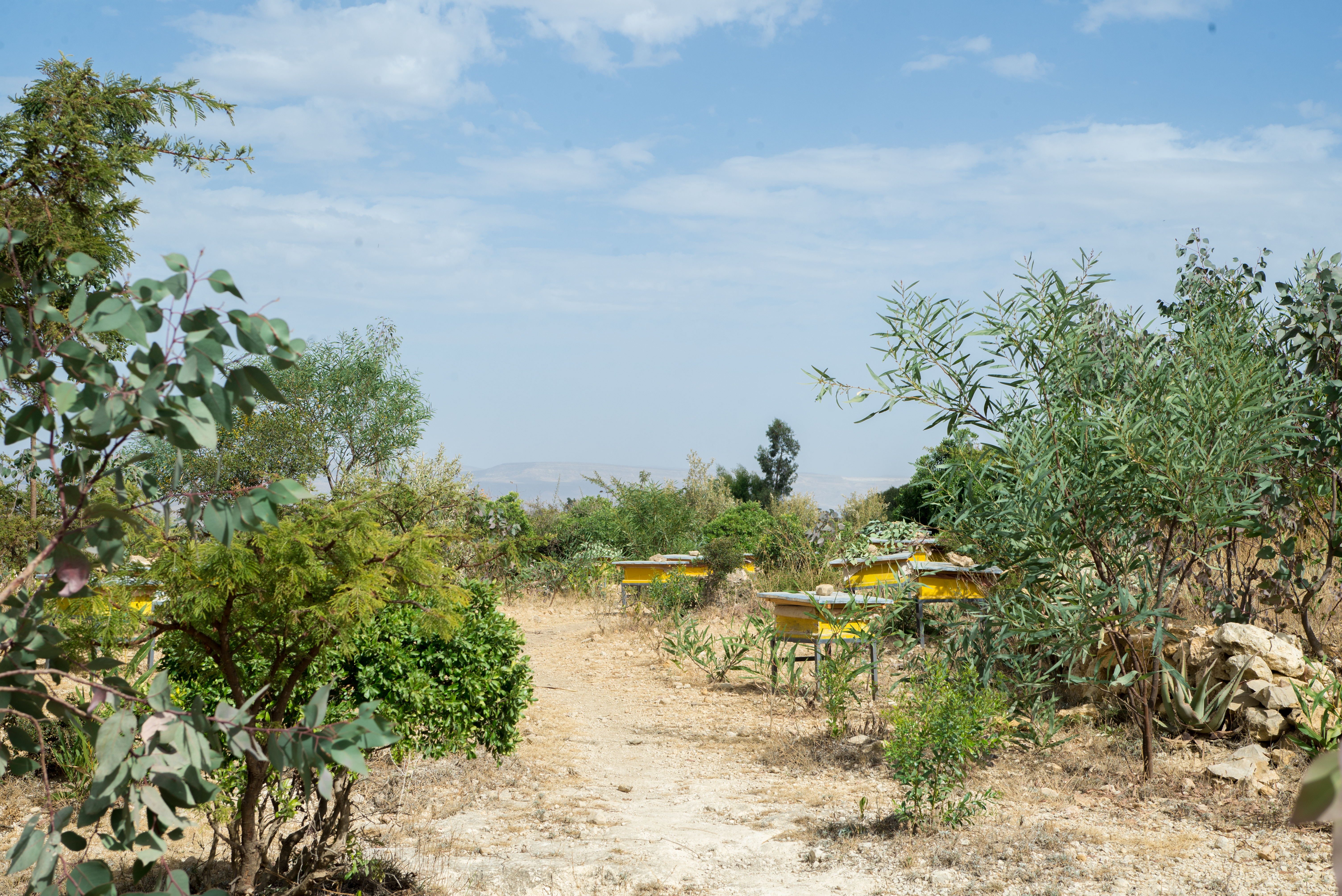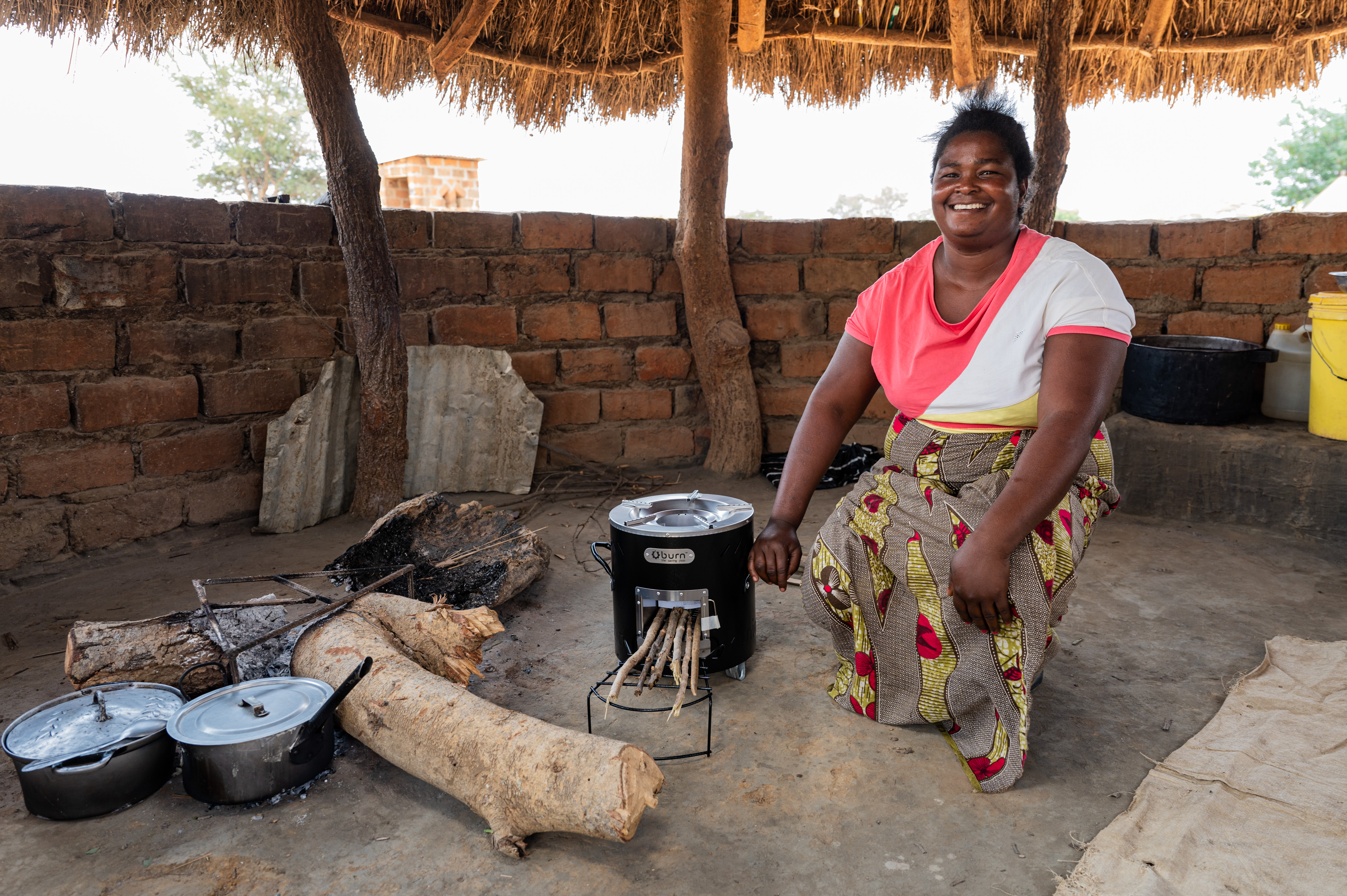How biogas plants benefit the climate
Many households in India use clay stoves fired with wood. However, their use leads to significant indoor pollution and additionally to a decline in forest areas.
To counteract this problem, around 10,700 biogas plants of varying sizes were built in Odisha, Punjab, West Bengal, Bihar and Jharkhand between November 2020 and October 2021 as part of our carbon offset project. With a direct connector to the respective households, the conventional stoves will thus be replaced by sustainable cooking stoves supplied with energy from the biogas plant.
This technology is particularly efficient because each household can use the manure from its own cows to operate the plant. Furthermore, the appropriate disposal of waste such as cow dung improves the hygienic conditions in the communities. In addition, the residues from the biogas plants can be used as organic fertilizer for fields.

In biogas facilities, biomass is fermented into biogas in sealed digesters. Biomass may consist of organic waste or dung from cows or other animals. In countries like India or Vietnam, families use the gas from small biogas plants for cooking. This reduces CO2 emissions that would be produced by cooking with wood or charcoal. Biogas plants also prevent methane from escaping into the atmosphere, as is the case when organic waste is stored in an open pit. Instead, the gas is fed from the closed digesters to specific cookers and thus provides an independent and renewable source of energy.
Explore our projects
Biochar for Climate Action, Healthy Soils, and Better Harvests

A certified climate project combined with additional commitment

Expansion of renewable energy generation in Asia

Ceramic water filters save CO2 and improve health

Improved cookstoves worldwide – for better health and cleaner air

A certified climate project combined with additional commitment

Powering access to renewable energy in Africa

A certified climate project combined with additional commitment

Restored ecosystems remove carbon

Turning degraded farmlands into healthy ecosystems

Improved cookstoves - better for health and the environment













































